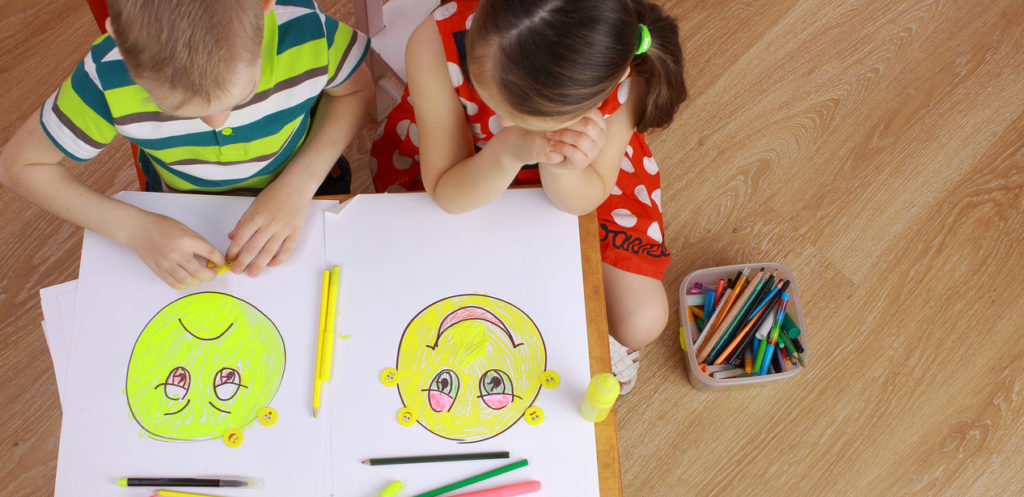Babies’ senses and skills start developing the minute they are born. This development also includes emotional development. It grows every day as infants interact with their parents and families. And unlike genetic developments, emotional development needs outside interference. It is very important to play a big role in your child’s emotional growth. Now you might be wondering how to do so? Well, here are some ideas to help your baby’s emotional development.
What is emotional development?
Emotional development starts from birth and till the child hits puberty. The foundation of this development is to identify emotions and feelings and understand them. It also means to know why those emotions happen and how to deal with them. For little children, emotional development starts as little physical feelings. For example, if they are scared, their heartbeats increase or they get a trembling feeling in their tummies.
As children grow, they start to identify their emotions and understand them. They also learn how to deal with them and work through them. And as children become young adults, they start to understand other people’s emotions and feelings. Experts believe that the best approach to emotional development is constant conversation with kids. The more you talk to your children about this, the more they become emotionally mature.
Why is this very important?
Both social and emotional development are very important at the early years of a child’s life. This helps them become successful young adults who are capable of building good relationships with other people. All of this contributes to them becoming good and productive members in society. It reflects greatly on their future and how they establish and maintain good relationships with their family and friends.
Emotional growth makes children more special
How can emotional maturity reflect on children?
- – It helps them make friends easily
- – Makes them good leaders
- – Helps them give good advice to friends
- – They become more into joining clubs and enrolling in extracurricular activities
- – It helps them help peers learn new things
- – They can keep close friends
- – Teaches them to sympathize with others
- – Their peers will love them because they know they can depend on them
- – This maturity encourages them to be active and social
- – It teaches them how to brainstorm and solve problems
- – Emotional maturity helps children express themselves
- – They become capable of having discussions and taking responsibility
- – Finally, it helps them see and understand other people’s emotions
Activities that helps your child’s emotional development at home
1| Revisiting good memories
Having a family gathering to revisit good old memories is one of the best things you can do. It really helps your child grow emotionally. This simple family activity is fun and makes a great bonding activity. Use sentences to show gratitude to help your child learn how to do so. Let your children express their feelings about those memories. They can do so through words, drawings, or making cards.
2| Teach them something new
Engage the whole family in teaching your little child a new thing. For example, you can teach them to fold laundry. Dads can teach them to take out the trash. An older sibling can teach them to color inside the lines. This will help them bond together while also building your little child’s self esteem and confidence. Remember to ask your children what they learned and encourage them to thank those who taught them those new things.
3| Identifying emotions
To help children grow emotionally, we need to help them explore themselves first. We also need to help them identify different emotions and understand them. You can do so through using pictures or movies. For example, if you are watching a movie together, ask your child what the characters feel. Why are they feeling this way? And how did we know they are feeling like that? All of this will teach children different emotions and it will help them tell them apart.
4| Drawing
Whether alone or in a group, drawing contributes a lot to emotional development. Here is a fun drawing idea for a group. Get a piece of paper and ask a group of children to draw one circle together one at a time. The first child will draw part of it, the second will draw another, and so on until the circle is complete. This will help them understand what the person before them had in mind. It will also teach them to understand and respect other people’s opinions. Furthermore, it is a great team activity.
5| Story time
Story time is always fun and educational for little children. It is such an easy activity that you can do while cooking, driving the kids, or simply hanging out at home on a weekend. Also, it helps develop so many skills like language, solving problems, and expressing emotions. You can be the storyteller yourself, or you can turn it into a group activity. How? Start telling the story and let each one of your children continue it. Let everyone have a turn in telling the story till it circles back to you. That is when you can share the moral of the story and have an open discussion with your children about feelings and emotions.
6| Engaging kids in family discussions
Finally, some parents think their kids are too young and inexperienced to be a part of big family discussions. However, including them helps their emotional growth greatly. Not only does it build in their confidence and respect for one another, but it also makes them feel heard and understood. In addition, it gives you a new point of view that can be worth considering before making big decisions.






